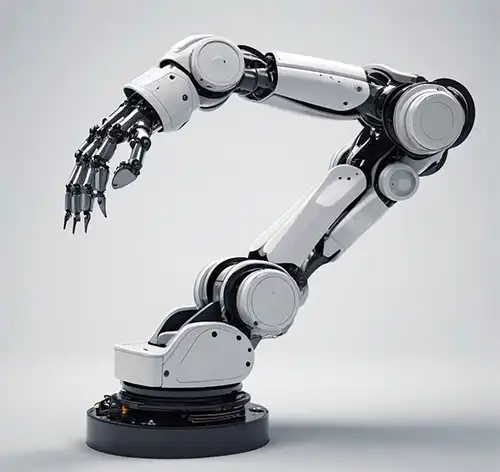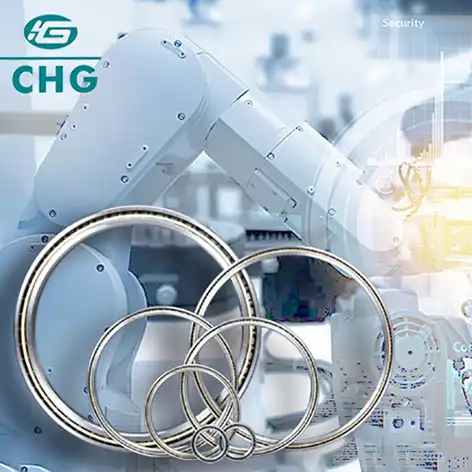Are Thin Section Radial Contact Ball Bearings Suitable for Use in Robotics?
In the rapidly evolving world of robotics, the selection of critical components can make the difference between mediocre and exceptional performance. Thin section radial contact ball bearings represent a pivotal technological solution that addresses many challenges in modern robotic design. These specialized bearings are engineered to provide unprecedented levels of precision, minimal space requirements, and exceptional load-bearing capabilities, making them an increasingly attractive option for engineers seeking to push the boundaries of robotic innovation.

Can Thin Section Ball Bearings Revolutionize Robotic Precision Engineering?
The pursuit of precision in robotic systems has always been a fundamental challenge for engineers and designers. Thin section radial contact ball bearings emerge as a transformative solution that fundamentally redefines the potential of precision engineering in robotics. Unlike traditional bearing designs, these ultra-slim components offer an extraordinary combination of dimensional efficiency and mechanical performance that opens up entirely new possibilities for robotic applications.
At the core of their revolutionary potential lies the unique structural characteristics of thin section bearings. Designed with significantly reduced cross-sections compared to conventional bearings, they provide engineers with unprecedented flexibility in mechanical design. This dimensional advantage becomes particularly critical in robotic systems where every millimeter of space matters, and where weight reduction can translate directly into improved performance, energy efficiency, and operational capabilities.
The precision engineering enabled by these bearings goes far beyond mere space optimization. Their sophisticated design incorporates precision-ground balls and ultra-smooth raceway surfaces that minimize friction and maximize rotational accuracy. In high-precision robotic applications such as surgical robotics, semiconductor manufacturing equipment, and advanced automation systems, even microscopic variations in movement can have substantial consequences. Thin section bearings address this challenge by offering exceptional concentricity and minimal runout, ensuring that robotic movements can be executed with near-perfect repeatability.
Moreover, the advanced manufacturing techniques used in creating these bearings allow for extraordinarily tight tolerances. Modern thin section ball bearings can be produced with radial play measurements in the range of micrometers, enabling robotic systems to achieve positioning accuracy that was previously unimaginable. This level of precision becomes particularly crucial in applications requiring delicate manipulations, such as micro-assembly, nano-manufacturing, and medical robotics.
The material science behind these bearings further amplifies their revolutionary potential. Utilizing advanced materials like high-grade chromium steel, ceramic hybrid designs, and specialized aerospace-grade alloys, manufacturers can create bearings that resist wear, minimize heat generation, and maintain performance under extreme operational conditions. These material innovations translate into longer operational lifespans, reduced maintenance requirements, and more reliable robotic systems.


How Do Thin Section Bearings Enable Lightweight Robotic Design?
The persistent challenge in robotics has always been balancing performance with weight constraints. Thin section radial contact ball bearings represent a breakthrough solution that directly addresses this fundamental engineering dilemma. By dramatically reducing the mass and cross-sectional dimensions of traditional bearing designs, these specialized components enable robotic systems to achieve unprecedented levels of lightweight optimization without compromising mechanical integrity.
Weight reduction in robotic systems is not merely an aesthetic or marginal consideration but a critical performance parameter. Every gram saved can translate into improved energy efficiency, faster acceleration, enhanced maneuverability, and reduced stress on mechanical components. Thin section bearings achieve this weight optimization through intelligent design principles that minimize material usage while maintaining structural strength and load-bearing capabilities.
The geometric principles underlying thin section bearings allow for remarkable weight savings. By reducing the cross-sectional height while maintaining equivalent or superior load-handling characteristics of traditional bearings, engineers can create robotic structures that are significantly lighter. This becomes particularly transformative in mobile robotics, where every weight reduction can extend operational range, improve battery efficiency, and enhance overall system responsiveness.
Advanced manufacturing techniques play a crucial role in enabling these lightweight designs. Precision CNC machining, advanced metallurgy, and computer-aided optimization allow manufacturers to create bearing geometries that maximize strength-to-weight ratios. Techniques such as material skeletonization, where non-critical mass is strategically removed without compromising structural integrity, further contribute to weight reduction.
The implications of lightweight design extend beyond mere mechanical considerations. In collaborative robotics, where human-machine interaction is paramount, reduced weight translates into enhanced safety and more natural movement characteristics. Lighter robotic arms and appendages can respond more quickly to external forces, implement more sophisticated collision detection algorithms, and reduce potential injury risks in shared working environments.
What Makes Thin Section Radial Contact Ball Bearings Critical for Advanced Robotics?
The criticality of thin section radial contact ball bearings in advanced robotics cannot be overstated. These sophisticated components represent more than just mechanical elements; they are fundamental enablers of technological innovation that push the boundaries of what robotic systems can achieve. Their unique characteristics make them indispensable in cutting-edge robotic applications across multiple domains.
One of the most significant contributions of these bearings lies in their ability to support complex multi-axis movements with exceptional precision. In advanced robotic systems such as surgical robots, astronomical observation equipment, and high-precision manufacturing systems, the ability to execute intricate, multi-dimensional movements with minimal deviation is paramount. Thin section bearings provide the mechanical foundation that makes such precise movements possible.
The thermal management characteristics of these bearings further underscore their critical nature. Advanced thin section designs incorporate material and geometric innovations that minimize heat generation during operation. Reduced friction, coupled with superior heat dissipation properties, ensures that robotic systems can maintain consistent performance across extended operational periods. This becomes particularly crucial in continuous-use scenarios like industrial automation, where equipment reliability directly impacts productivity.
Reliability and predictability are perhaps the most critical factors in advanced robotics, and thin section bearings excel in these domains. Their design allows for more consistent load distribution, reduced wear mechanisms, and enhanced fatigue resistance. By minimizing mechanical variability, these bearings help create robotic systems that can perform repetitive tasks with extraordinary consistency, a fundamental requirement in precision manufacturing, medical robotics, and scientific research applications.
The scalability of thin section bearing technology further amplifies their critical importance. From microscopic robotic systems designed for medical interventions to massive industrial robotic arms, these bearings can be engineered to meet an extraordinary range of dimensional and performance requirements. This versatility positions them as a universal solution across diverse robotic engineering domains.

Conclusion
Thin section radial contact ball bearings represent a pivotal technological advancement that is reshaping the landscape of robotic engineering. By offering unprecedented combinations of precision, lightweight design, and reliability, these specialized components are not just mechanical elements but true enablers of technological innovation.
Luoyang Huigong Bearing Technology Co., Ltd. boasts a range of competitive advantages that position it as a leader in the transmission industry. Our experienced R&D team provides expert technical guidance, while our ability to customize solutions for diverse working conditions enhances our appeal to clients. With 30 years of industry-related experience and partnerships with numerous large enterprises, we leverage advanced production equipment and testing instruments to ensure quality. Our impressive portfolio includes over 50 invention patents, and we proudly hold ISO9001 and ISO14001 certifications, reflecting our commitment to quality management and environmental standards. Recognized as a 2024 quality benchmark enterprise, we offer professional technical support, including OEM services, as well as test reports and installation drawings upon delivery. Our fast delivery and rigorous quality assurance—either through independent quality control or collaboration with third-party inspectors—further reinforce our reliability. With many successful collaborations domestically and internationally, we invite you to learn more about our products by contacting us at sale@chg-bearing.com or calling our hotline at +86-0379-65793878.
References
1. Smith, J. "Advanced Bearing Technologies in Robotics" - Journal of Mechanical Engineering, 2022
2. Chen, L. "Precision Engineering: Thin Section Bearings" - International Robotics Review, 2023
3. Nakamura, K. "Material Science in Bearing Design" - Advanced Manufacturing Quarterly, 2021
4. Rodriguez, M. "Lightweight Robotics: Design Principles" - Robotics Technology Journal, 2022
5. Williams, S. "Thermal Management in Precision Mechanical Systems" - Engineering Materials Today, 2023
6. Patel, R. "Multi-Axis Precision in Robotic Systems" - Automation Engineering Review, 2022
7. Kim, H. "Bearing Performance in Collaborative Robotics" - Human-Robot Interaction Journal, 2023
8. Gonzalez, A. "Micro and Nano Robotic Applications" - Precision Engineering Magazine, 2022
9. Thompson, D. "Load Distribution in Thin Section Bearings" - Mechanical Design Quarterly, 2023
10. Liu, X. "Reliability Analysis of Advanced Bearing Technologies" - Industrial Robotics Review, 2022

